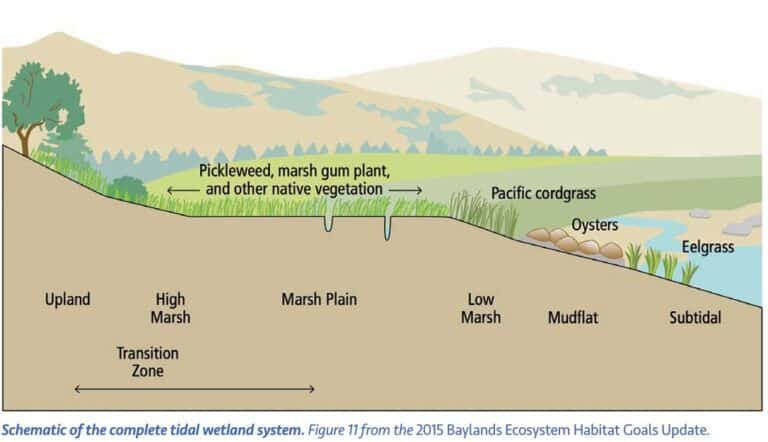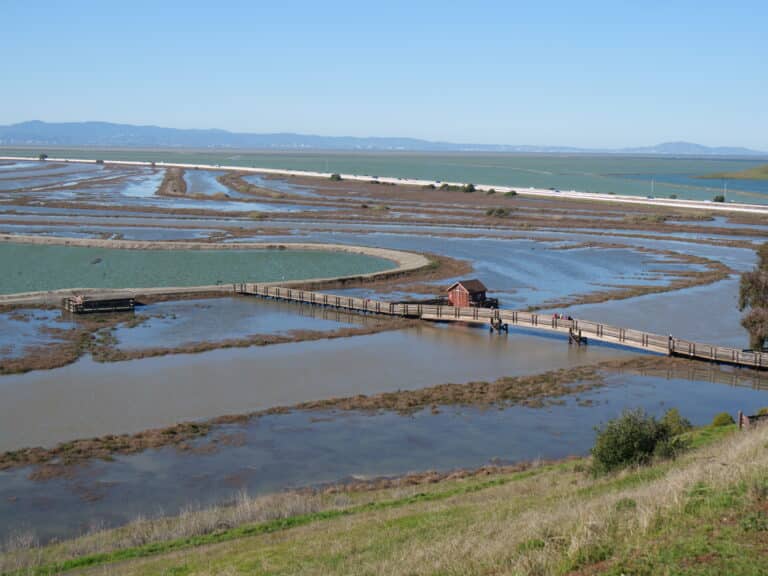
Tidal Wetlands & the San Francisco Bay Ecosystem
San Francisco Bay is more than a beautiful natural landmark – it’s a complex living ecosystem that supports hundreds of fish and wildlife species, millions of migratory shorebirds and waterfowl, and numerous threatened and endangered species. Its natural abundance is also why people have called the Bay home for more than 10,000 years.
The Bay is made up of many different types of wildlife habitat – from the open waters of the Bay to the near-shore sub-tidal habitat, to eel grass beds and oyster reefs. However the most important ecosystem is its tidal wetlands. Often called “the lungs of the Bay,” tidal wetlands meet at the intersection of land and water, where they act as the nurseries for young fish and birds, filter toxins out of the water, and provide food and habitat for both resident and migratory species. Tidal wetlands also have a host of other “ecosystem services” including providing flood protection for nearby communities, combatting erosion, and storing large amounts of atmospheric carbon, making tidal wetlands one of the most valuable habitats for combatting climate change.
The image below shows a cross-section representation of a “complete tidal wetland” from the upland areas that are outside of the reach of tidal action, to tidal marshes, mudflats and ultimately the open waters of the Bay. In a complete tidal wetland, each habitat type provides important and unique benefits for plants, fish and wildlife, in addition to ecosystem services for people. CCCR works to protect the entire continuum of a complete tidal wetland, knowing it is the system as a whole that is crucial to the health of the Bay.

Since the 1800’s, California has lost between 90-95% of its coastal wetlands to development and other harmful activities, and the San Francisco Bay-Delta ecosystem now contains over 77% of the State’s remaining coastal wetlands. In recognition of the importance of this habitat to maintain and improve the ecological health of the Bay, efforts are underway throughout the Bay-Delta estuary to restore tidal wetlands, including the largest wetland restoration projects on the West Coast of the United States: The South Bay Salt Pond Restoration Project.
Despite much progress over the past decades, the Bay’s wetlands continue to face threats, requiring constant vigilance (See Threats to the Bay). One of the biggest threats is climate change and sea level rise. As San Francisco Bay experiences several feet of sea level rise over the coming century, the Bay’s complex ecosystems are undergoing major changes. As water levels rise, habitat types will be forced to move inland and upland. Meaning, what today may be wetlands may in the future be mudflats or even subtidal habitats. This also means that protecting current uplands – open space areas immediately adjacent to tidal marshes – is critical to ensure a place for tidal wetlands to move as water levels rise. Click the link below to learn more about how climate change is impacting San Francisco Bay, and the urgent actions we need to take to ensure a resilient Bay.
